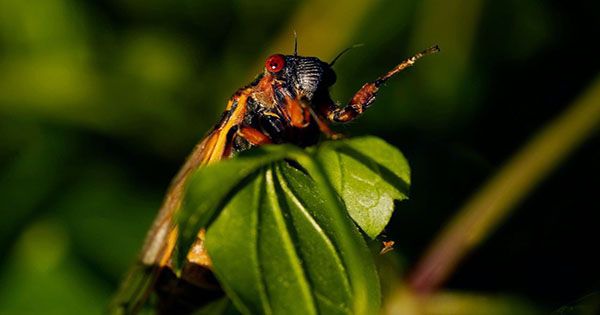Migratory locust swarms are so large that they resemble natural disasters and pose a threat to the food security of millions of people, particularly in Asia and Africa. The Book of Moses in the Old Testament previously relates how swarms of locusts darkened the sky and devoured all that grew in the fields and on the trees as the eighth of the ten biblical plagues.
Scientists believe that cannibalism among locusts contributes to their propensity to swarm. As a result, swarms are always on the move as individuals flee from conspecifics pursuing them.
“We wondered how these insects influence each other’s behavior within huge swarms, and whether olfaction plays a role. An important basis for us was the research on the formation of locust swarms by Iain Couzin of the Max Planck Institute for Behavioral Biology in Constance,” says study leader Bill Hansson, director of the Department of Evolutionary Neuroethology at the Max Planck Institute, explaining the starting point of the study published in Science.
Migratory locusts occur in different phases: The insects live alone and remain in the same place during the solitary phase, but during the gregarious phase they engage in the characteristic swarming activity that is consistent with their classification as migrating locusts.
“In most cases, locusts are in the solitary phase, where they avoid physical contact with conspecifics and eat comparatively little food. If the population density increases due to rainfall and sufficient food, the locusts change their behavior within a few hours; they can smell, see, and touch each other,” explains the study’s first author Hetan Chang.
“These three types of stimulation increase serotonin and dopamine levels in the locust brain, causing solitary locusts to become aggressive gregarious locusts that are very active and have a large appetite. They also release aggregation pheromones, which eventually leads to swarming and poses a huge threat to agricultural production. Cannibalism does only occur in the gregarious phase.”
We showed that as population density increased, not only did the level of cannibalism rise, but the animals also produced more PAN. Using genome editing, we were able to knock out an enzyme responsible for the production of this compound. This allowed us to confirm its strong anti-cannibalistic effect, because cannibalism was again significantly increased when the animals were no longer able to produce the compound.
Hetan Chang
Research on the migrating locust’s behavior According to Locusta migratoria, the number of gregarious animals housed in a cage together had an impact on the cannibalism rate.
Therefore, there is a connection between cannibalism and population density. The research team examined and contrasted all of the scents produced by solitary and gregarious locusts in the juvenile stage to determine whether gregarious locusts emit any specific odors that aren’t produced in the solitary phase.
Of the 17 odors produced exclusively in the gregarious phase, only phenylacetonitrile (PAN) turned out to be an odor signal that deterred other locusts in behavioral tests. The scientists employed genetically altered locusts that could no longer manufacture PAN to further demonstrate the role of PAN.
“We showed that as population density increased, not only did the level of cannibalism rise, but the animals also produced more PAN. Using genome editing, we were able to knock out an enzyme responsible for the production of this compound. This allowed us to confirm its strong anti-cannibalistic effect, because cannibalism was again significantly increased when the animals were no longer able to produce the compound,” says Chang.
The biggest challenge was finding the olfactory receptor that recognizes PAN. The study team had to clone as many genes as they could and evaluate each one individually because locusts have more than 140 olfactory receptor genes.
Tests on 49 different olfactory receptors using more than 200 relevant odors eventually led to the identification of the olfactory receptor OR70a as a highly sensitive and specific detector of PAN in the migratory locust Locusta migratoria.
Due to the locusts’ inability to sense the cannibalism stop signal without the appropriate receptor, behavioral studies with genetically altered locusts whose OR70a receptor was no longer functioning again revealed a significantly higher cannibalism rate.
A pheromone that controls cannibalism is an absolute new discovery. A thorough comprehension of the population ecology of these creatures, notably the effects of PAN, provides up new opportunities for the control of locusts because cannibalism has a significant impact on the dynamics of locust swarms.
“If you inhibit the production of PAN or the function of the receptor, you could get the locusts to behave more cannibalistically and potentially control themselves in that way,” Bill Hansson says.















